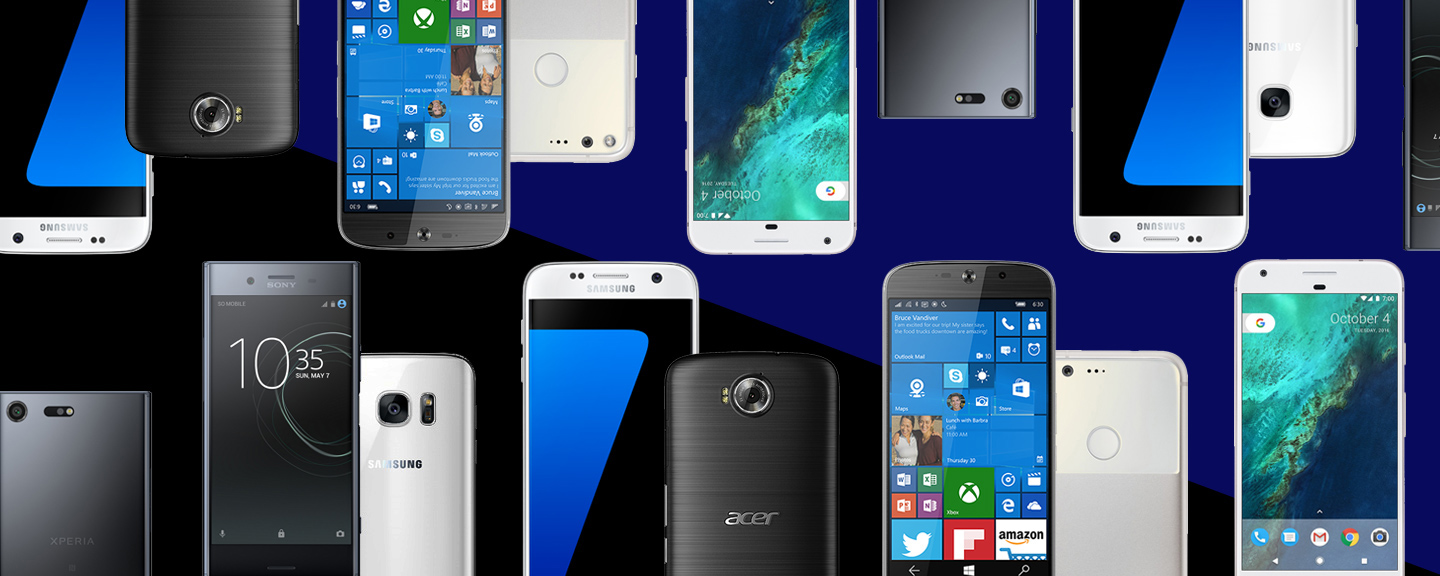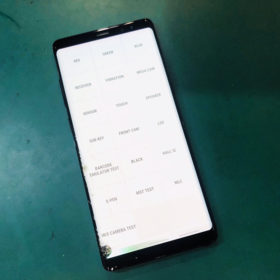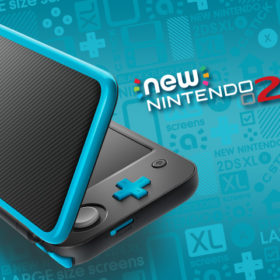Guidelines for Buying A New Phone
8 Quick Tips
- iOS is easier to use; Android gives you more choice. If you’re torn between iOS and Android, opt for an iPhone if you want something that’s easy to use and gets both the hottest apps first and timeliest software updates. Android is better if you want more hardware choice and more affordable options.
- Don’t pay more than you need to for a phone. While the iPhone and premium Android phones start at around $650 and can easily run you $800 or more, there are great cheap unlocked-phone options below $500 and even some solid choices for less than $300.
- Get the right size screen. Buy a phone with a screen smaller than 5.5 inches if one-hand use is important to you or if you have smaller hands. (See Best Small Phones for more.) Get a bigger-screen phone if you like to watch a lot of videos, play games or want to take advantage of the multiwindow mode in Android Nougat. Still, phone-makers are starting to focus on ways to make even big-screen phones, such as the 5.7-inch LG G6, fit comfortably in one hand.
- For a phone’s display, color quality and brightness matter more than resolution. A 4K screen on a phone is nice to have but kind of overkill. Pay more attention to how bright the display is, so it will be easy to see outdoors, and how colorful the panel is (AMOLED is better than LCD in this regard). The very latest phones offer high dynamic range (HDR) for displaying even more colors.
- Ignore camera megapixels. Along with battery life, the camera has become the most important smartphone feature. Pay attention to specs such as aperture (lower numbers are better) and special features such as dual lenses. Ignore the megapixels. See the Best Camera Phones for our top picks.
- The processor matters less than it used to. Even midrange phones now offer good-enough performance for most users. But if you want the most power for games and virtual reality, buy an Android phone with a Snapdragon 821 chip or the very latest Snapdragon 835 mobile platform. A Snapdragon 600 series chip is fine for midtier Android phones. The A10 processor in the iPhone 7 and iPhone 7 Plus is very speedy.
- Don’t settle for a smartphone with a battery capacity of less than 3,000 mAh. See our list of the longest-running phones based on the Tom’s Guide Battery Test (web surfing over 4G LTE) to find out which devices will get you through the day on a single charge.
- Get at least 32GB of storage. Phones with 16GB are a rip-off, and thankfully, they’re becoming rarer among flagship phones, which generally start at 32GB of storage. If you plan to download lots of games or shoot 4K video, opt for 64GB or more. A microSD card slot is nice to have for expanding storage, but it’s only available on certain Android phones.
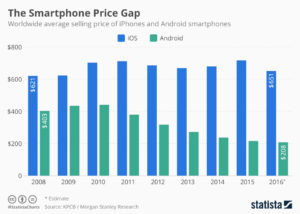
Price: How Much Should You Pay?
Now that wireless carriers no longer subsidize the cost of phones with two-year contracts, you wind up paying full price. And although providers try to ease the sting by breaking up the cost into monthly payments, you could easily wind up paying anywhere from $650 to $800 for your next phone. We’re not saying the smartphones aren’t worth it, but there are compelling alternatives.If you’re looking to save some money and still get a very capable handset, take a good look at unlocked Android phones. The best of these models offer surprisingly good value, including solid performance, full-HD screens and long battery life. One such model is the 5.5-inch OnePlus 3T ($439). The Moto G5 Plus also delivers a lot for very little, including a sleek aluminum design, an octa-core CPU and a fingerprint sensor for $229.
Just keep in mind that most unlocked phones work only with GSM carriers, such as AT&T and T-Mobile, and not the CDMA-based networks of Sprint and Verizon. But there are some exceptions. Be sure to check the specs.
Operating System: Android, iOS or Other?

Android
Android dominates worldwide smartphone sales, and for good reason. You’ll find many more choices than iOS when it comes to design, display size, specs, capabilities and price. Plus, Android is an open OS, which means it’s easier to customize with awesome launchers and widgets.
With the latest version of Android 7.0 Nougat, Android phones offer better multitasking out of the box, with a new multiwindow feature, direct replies to notifications and a Doze feature for saving battery life. However, when a new version of Android arrives, it can take several months (or longer) for the updated OS to hit your phone. There are two exceptions to this: Google’s own Pixel and Pixel XLphones, which get security and software updates directly from Google.iOS 10
iOS 10
All of the latest iPhones — including the iPhone 7, iPhone 7 Plus and iPhone SE— run the latest version of Apple’s operating system. iOS 10 offers several enhancements, including a more interactive and expressive Messages app, an improved Siri that plugs into more apps and a Home app that helps you control smart home gadgets.
The biggest reasons to opt for an iOS device include its ease of use, access to OS updates as soon as they’re available (unlike Android, with the exceptions of Google’s Pixel phones) and the ability to work seamlessly with Apple devices (such as the iPhone and the Mac).
Apple’s App Store tends to get the hottest apps and games before Android, partly because developers have an easier time targeting a smaller set of devices that have similar specs. By the same token, iPhones enjoy the broadest array of accessories, because there’s less variation in design from one model to the next.
Windows Phone
Windows Phone has never caught on, and Windows 10 Mobile is off to a very slow start. The most compelling features are Universal Windows apps and Continuum. Universal apps allow developers to create one app for Windows 10 on the desktop and mobile. Continuum enables you to run Windows 10 Mobile on the desktop with a compatible dock using phones such as the Acer Liquid Jade Primo. Still, app-makers continue to focus on iOS and Android, and this platform won’t get any attention until Microsoft unveils a possible Surface phone.
Screen Size
Although bigger screens are in vogue, you’ll still find a wide variety of display sizes. And size is only part of the story.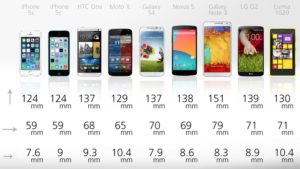
Small Screen (5 Inches or Smaller)
The main reason to buy a small-screen smartphone is for its compact design.You won’t have to stretch your thumb to reach anything, and the phone will fit easily into a pocket. Small phones such as the 4.7-inch iPhone 7 and 5-inch Google Pixel are compact and powerful, and the 4.6-inch Xperia X Compact is a decent affordable option.
Medium Screen (5 to 5.5 Inches)
Phones in this size range are good for people who want a good balance between a design that’s front-pocket friendly and an immersive entertainment experience. The 5.3-inch LG X power is a good example because of its long-lasting battery and bargain price, as is the aging but still solid Samsung Galaxy S7 (5.1 inches).
Large Screen/Phablet (5.5 Inches or Larger))
Smartphones with displays larger than 5.5 inches, such as the 5.5-inch iPhone 7 Plus and 5.5-inch Google Pixel XL, have been called phablets because they’re nearly tablet-size. These phones are great for watching videos, reading e-books and running two apps side by side. Plus, smartphone-makers are figuring out ways to minimize bezels, so you can get a big screen in a fairly compact design, such as with the LG G6 and the Galaxy S8.
Display Quality
The size of the screen is only one consideration. Pay close attention to a smartphone’s brightness, color quality and viewing angles.
First, make sure that the smartphone you’re shopping for has a panel that’s bright enough for you to be able to read it outdoors in direct sunlight. (See the nit measurements we take with a light meter in our reviews to compare.)
How colorful a screen is another important consideration; phones with AMOLED screens, such as the Samsung Galaxy line, tend to offer richer hues than handsets with LCD screens, as well as deeper black levels and wider viewing angles. If you want the most colors possible in a phone, look for a model that supports HDR, such as the LG G6. This technology also enables superior contrast in movies and TV shows. Both Amazon and Netflix offer some HDR content.
For a phone’s resolution, full HD (1920 x 1080 pixels) is the bare minimum we’d suggest. Most high-end phones these days offer quad-HD resolution, or 2560 x 1440 pixels. Very few phones boast 4K resolution, such as the Xperia XZ Premium (3840 x 2160), but you’re unlikely to notice the extra pixels.
Our smartphone reviews include valuable test results on brightness, color gamut and color accuracy, to help you make the most informed buying decision.
Design
The definition of a good or bad smartphone design is highly subjective, but if you care about build quality and aesthetics, look for a metal or glass design, or a phone that offers both. There are some cheap handsets that have plastic bodies, but in general, we’d avoid them unless your top consideration is to save money.
If you’re concerned about durability, make sure your phone is water-resistant. A typical spec you’ll see is IP68, which means that the phone should be able to survive being submerged in 1 meter (about 3 feet) of water for 30 minutes. In other words, you won’t have to worry about your phone being damaged if it gets wet.
A handful of phones, such as the Moto Z Force, go the extra mile by featuring a shatterproof glass display. But at the very least, you should shop for a phone that has a Gorilla Glass display, which should protect your device from short drops (though a protective case will help with that, too).
Camera
We’ve arrived at a point in smartphone evolution where the camera matters more than the processor, especially considering most people use their phones as their primary shooters. More and more smartphones boast cameras with at least 12 megapixels, but don’t go by only that stat. Instead, pay attention to image quality, aperture, speed and features.The iPhone 7 Plus impresses with its dual cameras on the back, offering a true 2x optical zoom. The wide f/1.8 aperture is also a plus (lower numbers are better), because it enables both the iPhone 7 and iPhone 7 Plus to take great pictures in low light, thanks to the wide f/1.7 aperture (lower numbers are better). The Google Pixel, by contrast, has an aperture of f/2.0, so it’s not quite as good in dim conditions.
If possible, test the phone you plan to buy to make sure it captures images quickly enough; some midrange and lower-end phones suffer from lag. And if you plan to shoot a ton of photos and video, look for a handset with a microSD card slot.
Processor
A good processor inside a phone should translate to faster open times for apps, smoother gameplay and quicker photo editing, but you don’t have to pay attention to clock speed. It’s better to look at the performance results in our reviews, such as Geekbench, which measures overall performance.
Among Qualcomm CPUs, the Snapdragon 835 processor is the class-leading chip, followed by the older Snapdragon 821. The 835 is the one to get if you want the best possible virtual-reality and gaming performance, as well as better efficiency, which translates to longer battery life.
Apple’s 64-bit A10 chip in the iPhone 7 offers some of the fastest speeds we’ve seen from any smartphone, including class-leading gaming performance. It also offers two high-efficiency cores that help optimize battery life.
The Snapdragon 600 series powers midtier smartphones, such as the Moto G5 Plus. These processors offer good overall performance, but don’t expect to play the most demanding games without lag, or to experience VR.
Other CPU players include Huawei, whose octa-core Kirin processor provides plenty of pep in phones such as the big-screen Mate 9.
RAM
Here’s an easy way to look at smartphones’ RAM, which is critical for multitasking. Try to avoid handsets with just 1GB of system memory. On mid tier devices, 2GB is good and standard. But you’ll often find 4GB on the latest flagships. Some phones, such as the OnePlus 3T, offer as much as 6GB of RAM, but for the most part, these configurations are available only overseas.
Internal Storage
Given that some games can easily take up more than 1GB of storage — not to mention how many high-res photos and videos smartphone owners are capturing — we highly recommend opting for as much internal storage as possible. The minimum on most premium handsets these days is 32GB. We recommend 64GB if you shoot a lot of photos and video, and 128GB if you like to record 4K video and download a ton of games.
A microSD card can help expand your storage. It’s available on many Android phones.
Battery Life
Many factors — including the screen size, processor and operating system — determine how long a smartphone lasts on a charge. However, shoppers looking for the longest endurance possible should check out our list of battery-life champs. We consider any phone that lasts longer than 9 hours of straight 4G LTE surfing to be very good.
Battery capacity is a spec that can help determine a phone’s potential staying power, but it’s not as reliable as our test results. Nevertheless, look for a phone battery with at least 3,000 mAh if you want the best chance at long battery life.
Removable Battery
Removable batteries have fallen out of favor with most smartphone-makers. But there are some benefits to this kind of design. Once your existing battery stops holding a charge for as long as it did when it was fresh, you can just swap in a new one without having to pay for a replacement service or a new phone.
Third-party vendors, such as Mugen Power, make high-capacity replacement batteries that offer more endurance than the originals. Also, if you carry a spare battery, you’ll be able to swap in a new one to keep your phone going longer.
Other Key Features
Wireless Charging
Despite progress toward marrying multiple standards, wireless charging is more of a nice-to-have feature than a must-have at this stage. The idea is to place your device on a compatible wireless charging mat. While it may be convenient, wireless charging likely won’t take off until the technology is built into everything from cars to furniture — or if Apple decides to adopt it.
Fingerprint Security
Popularized by the iPhone’s Touch ID sensor, fingerprint security on smartphones makes it easier to unlock your device and verify mobile payments.
